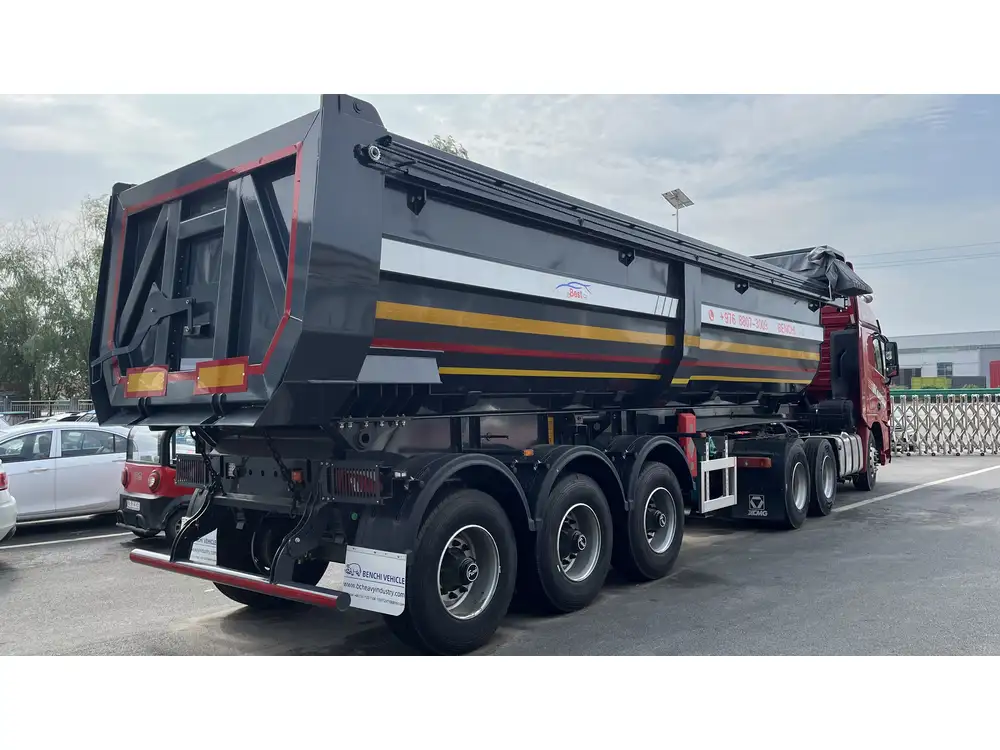When it comes to ensuring the safety and functionality of your semi-trailer, one of the elements that often gets overlooked is the brake system. Self-adjusting brakes play a pivotal role in maintaining stopping power and overall vehicle performance. In this article, we will delve deep into the intricate process of adjusting self-adjusting brakes on a semi-trailer, arming you with the knowledge you need to tackle this essential maintenance task effectively.
Understanding Self-Adjusting Brakes
Self-adjusting brakes are designed to automatically maintain optimal brake shoe clearance as they wear down. This feature is particularly useful in reducing the frequency of manual adjustments, thereby enhancing efficiency. However, like all mechanical systems, they require periodic inspection and occasional manual adjustment, especially if braking performance begins to diminish.
Key Components of Semi-Trailer Brake Systems
Before diving into the adjustment procedure, it is crucial to familiarize yourself with the key components of the semi-trailer brake system:
| Component | Description |
|---|---|
| Brake Shoes | Friction elements that press against the drum to create braking force. |
| Brake Drum | A cylindrical component that houses the brake shoes. |
| Adjuster Mechanism | A device that compensates for brake shoe wear. |
| Anchor Pin | A fixed point on which the brake shoes pivot. |
Understanding these components will help you identify potential issues and ensure a comprehensive approach to maintenance.

Signs of Brake Adjustment Needs
Recognizing when to adjust your self-adjusting brakes is vital. Watch for the following indicators:
- Reduced Braking Performance: If you notice longer stopping distances or the need for additional pressure on the brake pedal, it may indicate that your brakes are out of adjustment.
- Uneven Wear on Brake Shoes: Inspect your brake shoes regularly; uneven wear suggests misalignment or improper adjustment.
- Increased Noise: Squeaking or grinding sounds during braking may indicate that the brake shoes are too close to the drum or excessively worn.
Step-by-Step Guide to Adjusting Self-Adjusting Brakes
Preparation
Gather Tools and Materials:
- Brake adjustment tool (or a suitable alternative)
- Torque wrench
- Socket set
- Safety glasses and gloves
- Wheel chocks
Safety First:
- Park the semi-trailer on a flat, stable surface.
- Engage the parking brake and use wheel chocks to prevent movement.

Inspection Before Adjustment
Remove the Wheel:
- Use a jack to lift the semi-trailer and secure it with jack stands before removing the wheel.
- When working on heavier loads, ensure stability at all times.
Inspect Brake Components:
- Examine the brake shoes for wear, cracks, or damage.
- Check the brake drum for scoring or signs of overheating.
- Inspect the adjuster mechanism for proper operation.
Adjusting the Brakes
Locate the Adjuster Mechanism:
- The adjuster is typically found at the top or the rear of the brake assembly.
Manual Adjustment:
- Depending on your vehicle’s manufacturer specifications, use a brake adjustment tool to turn the adjuster:
- Clockwise: This will bring the shoes closer to the drum.
- Counter-Clockwise: This will allow the shoes to retract.
- Depending on your vehicle’s manufacturer specifications, use a brake adjustment tool to turn the adjuster:
Monitor Brake Shoe Clearance:
- Adjust the brake shoes until you feel slight resistance when rotating the drum by hand.
- Make sure the shoes do not drag against the drum.
Reassembling and Testing
Reattach the Wheel:
- Carefully replace the wheel and lug nuts, ensuring they are hand-tight.
- Use a torque wrench to tighten the lug nuts to the manufacturer’s recommended torque specifications.
Lower the Semi-Trailer:
- Remove the jack stands and lower the vehicle to the ground.
Test Drive:
- Conduct a cautious test drive to evaluate the braking performance.
- Pay attention to any unusual noises or behaviors.

Regular Maintenance for Optimal Brake Performance
Maintaining self-adjusting brakes is not solely about making adjustments; it’s about adopting a form of routine stewardship over your vehicle’s brake system.
Recommendations for Regular Maintenance
- Inspection Schedule: Conduct brake inspections every 6 months or 12,000 miles, whichever comes first.
- Thorough Cleaning: Clean brake assemblies to prevent dirt and grime accumulation, which can hinder performance.
- Brake Fluid Check: Regularly check and replace your brake fluid according to manufacturer specifications.
- Professional Servicing: Consider scheduling a professional service for comprehensive brake system checks at least once a year.
Common Misconceptions About Self-Adjusting Brakes

Myth 1: Self-Adjusting Brakes Never Need Manual Adjustment
While self-adjusting systems minimize the frequency of manual adjustments, they still require occasional attention, particularly for heavy-duty vehicles subjected to rigorous operations.
Myth 2: If One Side is Worn Out, the Other Should Be, Too
Asymmetrical wear can occur due to factors such as loading conditions, driving habits, and brake component issues. Regular checks on both ends are critical to balanced performance.
Myth 3: All Self-Adjusting Brakes Work the Same
Self-adjusting brakes come in various designs depending on the manufacturer. Familiarizing yourself with the specific make of your trailer can provide clarity and insight into the adjustments needed.

Conclusion
Maintaining the self-adjusting brakes on your semi-trailer demands not only technical aptitude but also an ongoing commitment to safety and performance. By understanding the components, recognizing wear indicators, and following a rigorous maintenance and adjustment schedule, you can enhance your vehicle’s reliability and operational efficiency.
With proactive measures, a well-maintained braking system will ensure that your semi-trailer remains safe on the road, thereby safeguarding not only the vehicle but also its cargo and the precious lives involved in transport.
Additional Resources
- Manufacturer Guidelines: Always refer to your semi-trailer manufacturer’s manual for specific instructions and specifications.
- Brake System Courses: Enroll in courses or workshops focused on brake system maintenance for deeper knowledge and practical experience.
- Professional Assistance: When in doubt, consult with a certified technician for comprehensive brake system evaluations.
By ensuring that your semi-trailer’s self-adjusting brakes are correctly adjusted and maintained, you not only adhere to safety regulations but also optimize the performance and longevity of your equipment.



